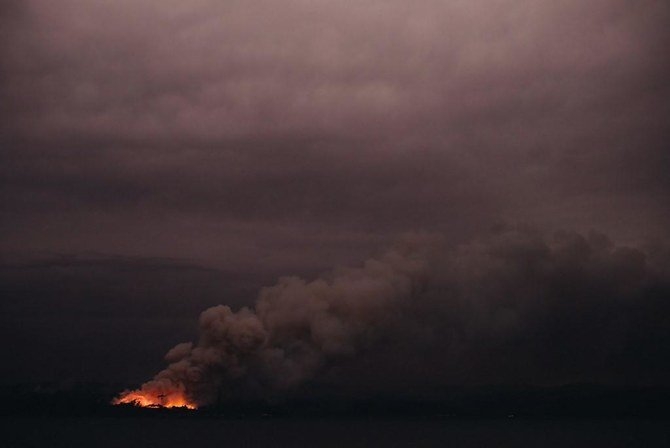Australia bushfires flare as heatwave brings renewed misery
Bushfires flared in southern Australia on Thursday as a heatwave expected to bring renewed misery set in, and officials warned some areas are “just at the beginning” of the devastating crisis.
Soldiers went door-to-door advising residents to leave the South Australian town of Parndana on Kangaroo Island after a large blaze bore down on the area, with temperatures there soaring to 38° Celsius (100° Fahrenheit).
That came less than 24 hours after police evacuated the picturesque island’s Vivonne Bay community, which by Thursday afternoon was also being threatened by fires that were expected to burn for days to come.
“The conditions are such that it is continuing to present a significant risk to the firefighters who are working hard to control the fires, and to anyone else in the vicinity,” Country Fire Service chief Mark Jones said.
In neighboring Victoria state, officials extended a “state of disaster” declaration for a further 48 hours ahead of scorching temperatures that were due to set in Friday, further stoking massive fires.
“It’s a very dangerous and dynamic situation that will confront us over the next 12, 24 and 36 hours,” Victoria Emergency Management commissioner Andrew Crisp said.
The catastrophic bushfires have killed at least 26 people, destroyed more than 2,000 homes and scorched some 80,000 square kilometers — an area the size of the island of Ireland.
Scientists say the drought-fueled blazes are being worsened by climate change, which is increasing the length and intensity of Australia’s fire season.
Victoria Premier Daniel Andrews warned residents to brace for further devastation in what has already been a months-long crisis.
“We’re just at the beginning of what will be a really, really challenging summer,” he said.
Despite cooler weather and rainfall providing some relief in some bushfire-affected areas this week, almost 150 fires were still burning in worst-hit New South Wales (NSW) and Victoria, the huge continent’s most populated regions.
Vast tracts of the states are facing “severe” fire danger Friday, with some areas expected to experience “extreme” conditions.
“Don’t get complacent with the rain that we’ve seen,” Victoria police minister Lisa Neville said.
“These fires are absolutely still moving, still growing in our landscape and they pose significant risk to communities.”
Firefighters have been taking advantage of this week’s milder weather as they race to contain bushfires ahead of Friday.
They have been clearing vegetation and carrying out controlled burns in an effort to protect areas like the coastal town of Eden, where a large bushfire is burning to the south.
“It only takes a spark to get a fire burning, and that’s our concern for tomorrow,” Rural Fire Service superintendent John Cullen told a local council briefing.
The Rural Fire Service said a helicopter pilot who had been waterbombing a fire in the area ditched his aircraft into a dam Thursday afternoon, managing to free himself and swim to shore.
In some burnt-out areas people have turned to the painful task of rebuilding their homes and lives, with the process expected to take years.
NSW announced Thursday it would spend A$1.2 billion ($680 million) on restoring infrastructure in fire-ravaged areas. That comes on top of a separate A$2 billion ($1.4 billion) national recovery fund earmarked to help devastated communities.
“We are always standing shoulder-to-shoulder with those who have been impacted by the devastating fires, this catastrophe which has come to New South Wales and we are stepping up to make sure we provide that support,” NSW Premier Gladys Berejiklian said.
The bushfire toll has not been limited to human losses — the blazes have also wreaked wide-ranging environmental damage.
University of Sydney scientists estimate one billion animals have been killed in the fires. The figure includes mammals, birds and reptiles, but not frogs, insects or invertebrates.
Bushfire smoke has shrouded Australia’s major cities in toxic haze for weeks, causing major public health concerns.
The smoke has also traveled more than 12,000 kilometers to Brazil and Argentina, according to weather authorities there.
Australia experienced its driest and hottest year on record in 2019, with its highest average maximum temperature of 41.9° Celsius recorded in mid-December.
Related Posts

